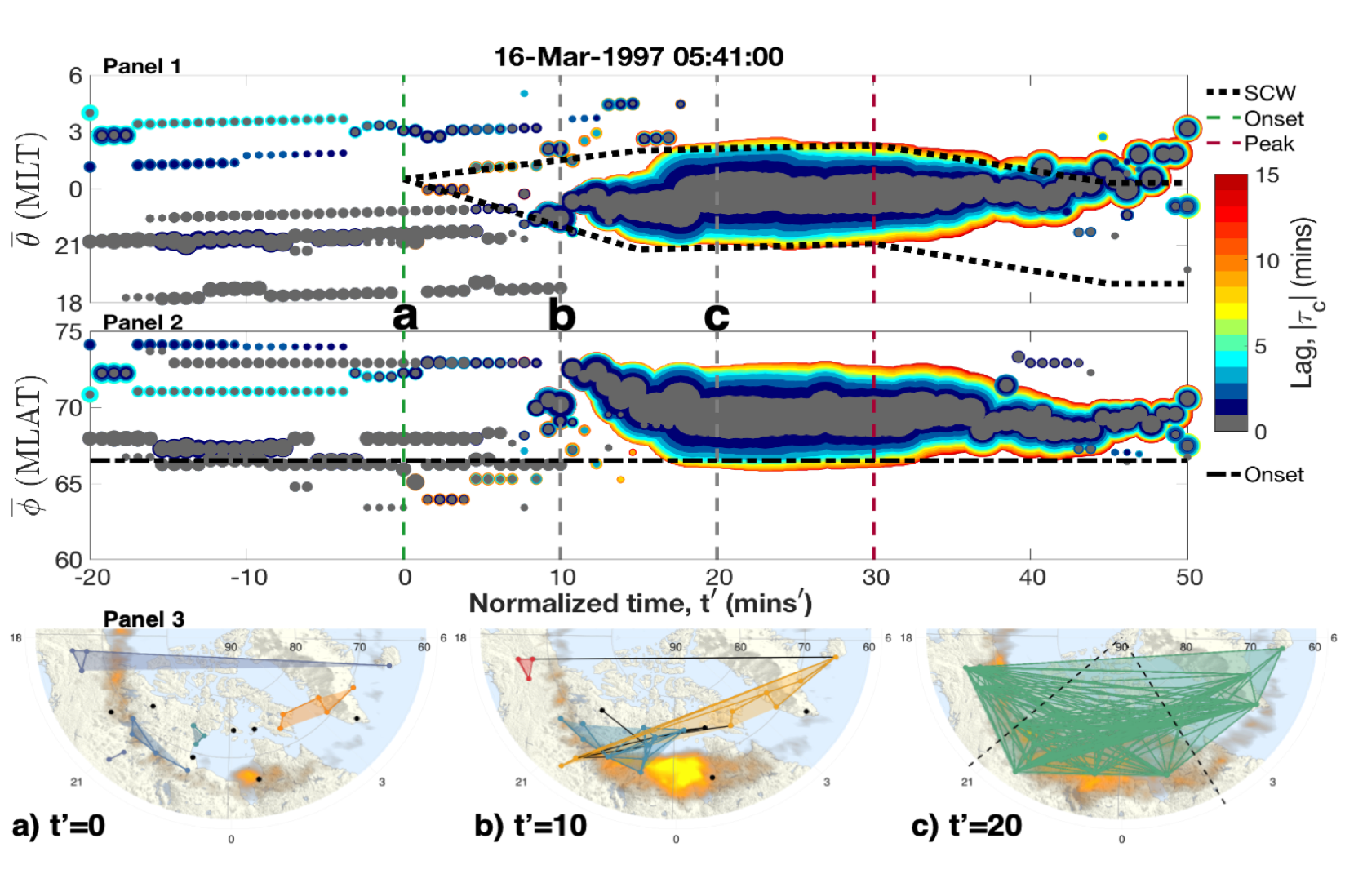MIST
Magnetosphere, Ionosphere and Solar-Terrestrial
Network community structure of substorms using SuperMAG magnetometers
By Lauren Orr (University of Warwick)
Geomagnetic substorms are a global magnetospheric reconfiguration, during which energy is abruptly transported to the ionosphere. Central to this are the auroral electrojets, large-scale ionospheric currents that are part of a larger three-dimensional system, the substorm current wedge. Many, often conflicting, magnetospheric reconfiguration scenarios have been proposed to describe the substorm current wedge evolution and structure. We have used well-established network science techniques to analyze data from >100 ground-based magnetometers operated by the SuperMAG collaboration1. We translated this data into a time-varying directed network, based on canonical cross-correlation of the vector magnetic field perturbations measured at each magnetometer pair2,3 and performed community detection on the network4. Communities are locally dense but globally sparse groups of connections in the network, identifying emerging coherent patterns in the current system as the substorm evolves. Analysis of 41 substorms exhibit robust structural change from many small, uncorrelated current systems before substorm onset, to a large spatially-extended coherent system, between 10-20 minutes after onset. We interpret this as strong indication that the auroral electrojet system during substorm expansions is inherently a large-scale phenomenon and is not solely due to many meso-scale wedgelets.

Figure 1: The community structure of a substorm on the 16/03/1997. The abscissa of all panels is normalized time, where t'=0 is onset (dashed green line) and t'=30 (dashed purple line) is the time of maximum auroral bulge expansion. Panels 1-2 plots individual communities as circles where the size of the circle reflects the number of connections within the community. The ordinate plots the mean MLT/MLAT of the community, and the color indicates the proportion of connections with each time lag, |τc|. The dashed lines overplotted are the edges of the auroral bulge (MLT) and the onset location (MLAT), found from auroral images. Panel 3 shows snapshots of the community structure at time points t’=0 (onset), t’=10 and t’=20, overplotted on maps provided by SuperMAG1. There is a clear shift from many, small uncorrelated communities before onset to one large correlated system half way through the expansion phase.
Please see the paper for full details:
Orr, L., Chapman, S.C., Gjerloev, J.W. et al. Network community structure of substorms using SuperMAG magnetometers. Nat Commun 12, 1842 (2021). https://doi.org/10.1038/s41467-021-22112-4